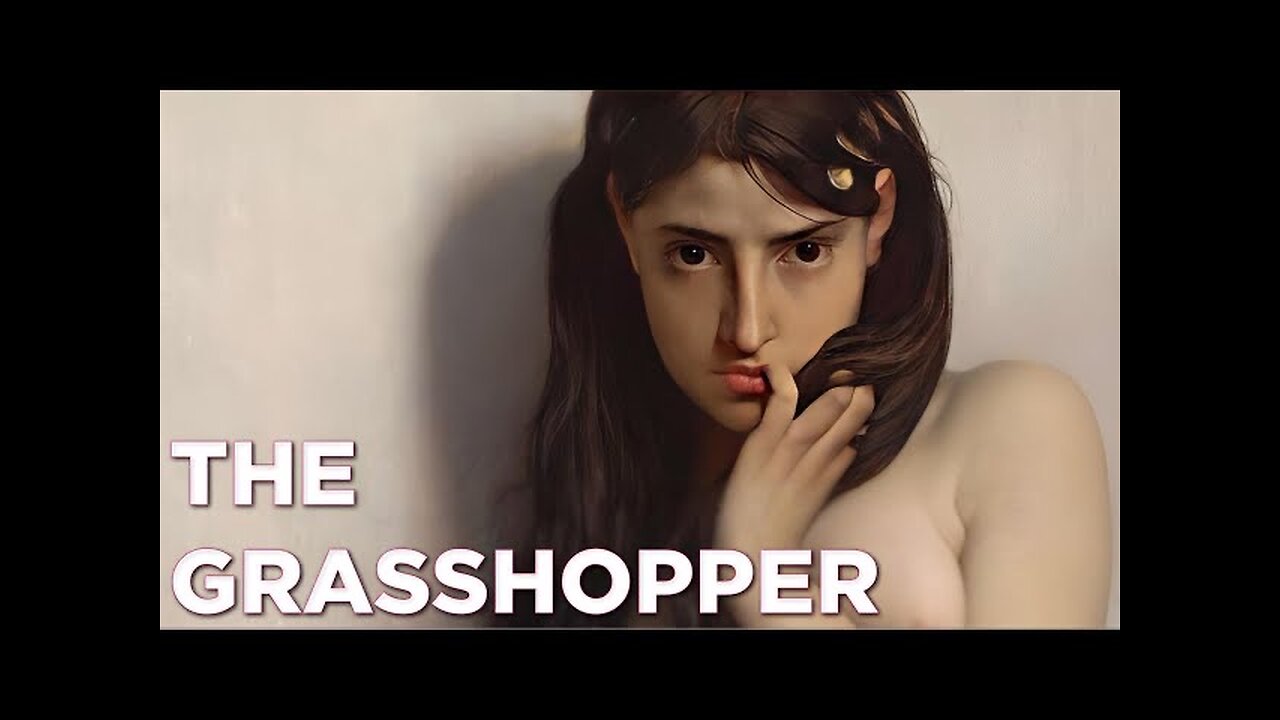Premium Only Content

Jules Lefebvre: The Grasshopper (1872)
https://danielearte.instabio.cc
A woman is depicted in the painting standing in front of a white wall. The woman is naked and she appears to be hungry as she bites her finger while staring at the viewer. She holds in one hand a white veil that is insufficient to cover her. Next to her is a plant that is losing its leaves; this is a sign that winter is approaching. The subject is derived from Jean de La Fontaine's adaptation of Aesop's fable "The Cicada and the Ant." When Lefebvre exhibited the painting at the Salon, he recited a verse from La Fontaine's version: "When the bee arrived" (When the cold north wind came). Aesop relates that during the summer, the ant worked to store food for the winter, while the cicada sang and danced. With the arrival of the autumn wind, the naked cicada realizes her vulnerability to a winter season as naked as she is. It is believed that Lefebvre was motivated to complete this work by recent events in French history, such as the defeat in the Franco-Prussian War of 1870-1871, Napoleon III's lack of preparation, the economic crisis, and the Paris Commune.
#danielearte
#onlineartgallery
#frenchpainter
-
 9:39
9:39
MattMorseTV
3 hours ago $0.02 earnedVance just DROPPED a BOMBSHELL.
3.06K31 -
 1:47:49
1:47:49
Jeff Ahern
3 hours ago $0.23 earnedThe Sunday Show!
111K4 -
 LIVE
LIVE
Spartan
2 hours agoExpedition 33, Halo Later on (Maybe)
80 watching -
 LIVE
LIVE
Meisters of Madness
1 hour agoFinals and Wuchang!
94 watching -
 LIVE
LIVE
Lofi Girl
2 years agoSynthwave Radio 🌌 - beats to chill/game to
253 watching -
 LIVE
LIVE
BBQPenguin_
2 hours agoTasking & PVP
45 watching -
 LIVE
LIVE
FrizzleMcDizzle
4 hours agoGladius, Creature of the Night - NEW NIGHTLORD - NightReign
56 watching -
 8:31
8:31
MattMorseTV
1 day ago $1.61 earnedTexas just did the IMPOSSIBLE.
70.3K92 -
 5:02:13
5:02:13
Rotella Games
19 hours agoGreen Hell Day 6 | We Have a LONG Way to Go
20.2K4 -
 41:26
41:26
The Mel K Show
6 hours agoMel K & Clay Clark | Financial Success Hides Behind Self Discipline: Five Pillars | 8-24-25
40.4K4